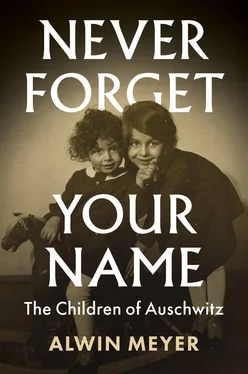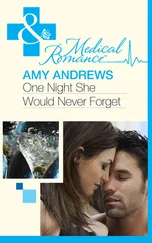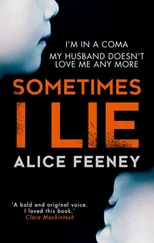(All translations are by Nick Somers, unless otherwise marked.)
1 1 See, in particular, Raul Hilberg, The Destruction of the European Jews (Chicago 1961), and Götz Aly, ‘Endlösung’ – Völkerverschiebung und Mord an den europäischen Juden (Frankfurt am Main 2017).
2 2Franciszek Piper, ‘Mass Murder’, in Wacław Długoborski and Franciszek Piper, eds., Auschwitz 1940–1945: Central Issues in the History of the Camp, vols. I–V, trans. from Polish by William Brand (Oświęcim 2000), vol. III, pp. 11–52, 205–31; Auschwitz-Birkenau Memorial and Museum (Teresa Świebocka, Jadwiga Pinderska-Lech and Jarko Mensfelt), Auschwitz-Birkenau: The Past and the Present (Oświęcim 2016), pp. 6–12.
3 3Auschwitz-Birkenau Memorial and Museum, Auschwitz-Birkenau.
4 4Piper, ‘Mass Murder’; moreover, from the first day of occupation onwards, Jews were ruthlessly murdered in the countries invaded by Nazi Germany, by German ‘Einsatzgruppen’ and ‘Einsatzkommandos’ (mobile killing units), but also by Wehrmacht units. According to the United States Holocaust Museum, 1.3 million Jews were shot by Wehrmacht and SS units or killed in gas trucks on the territory of the former Soviet Union alone: United States Holocaust Museum, Documenting Numbers of Victims of the Holocaust and Nazi Persecution | The Holocaust Encyclopedia ( ushmm.org).
5 5Auschwitz-Birkenau Memorial and Museum, Auschwitz-Birkenau, p. 12 (prepared by Piper).
6 6Helena Kubica, Geraubte Kindheit – In Auschwitz befreite Kinder [Stolen Childhood: Children Liberated in Auschwitz] (Oświęcim, October 2021), pp. 7, 59. Altogether, 400,000 babies, children and women were registered in Auschwitz, including over 23,500 children and juveniles, almost all of whom were murdered.
7 7Ibid., pp. 17, 33, 64.
8 8Helena Kubica, Pregnant Women and Children in Auschwitz (Oświęcim 2010), p. 13; see also George M. Weisz and Konrad Kwiet, ‘Managing Pregnancy in Nazi Concentration Camps: The Role of Two Jewish Doctors’, in Rambam Maimonides Medical Journal (Israel), 9.3 (July 2018).
9 9 Alwin Meyer, Mama, ich höre dich – Mütter, Kinder und Geburten in Auschwitz (Göttingen 2021), pp. 104–62.
This book could not have been written without the cooperation and willingness to provide information of the following:
Herbert Adler, Frankfurt am Main, Germany
Yehuda Bacon, Jerusalem, Israel
Halina Birenbaum, Herzliya, Israel
Robert Büchler, Lahavot Haviva, Israel
Gábor Hirsch, Esslingen, Switzerland
Lydia Holznerová, Prague, Czech Republic
Krzysztof J., Poland and Germany
Otto Klein, Geneva, Switzerland
Kola Klimczyk, Kraków, Poland
Josif Konvoj, Vilnius, Lithuania
Eduard Kornfeld, Zurich, Switzerland
Heinz Salvator Kounio, Thessaloniki, Greece
Géza Kozma, Budapest, Hungary
Ewa Krcz-Siezka, Poland
Vera Kriegel, Dimona, Israel
Dasha Lewin, Los Angeles, USA
Dagmar Lieblová, Prague, Czech Republic
Channa Loewenstein, Yad Hanna, Israel
Israel Loewenstein, Yad Hanna, Israel
Mirjam M., Tel Aviv, Israel
Jack Mandelbaum, Naples, FL, USA
Angela Orosz-Richt, Montreal, Canada
Hanka Paszko, Katowice, Poland
Anna Polshchikova, Yalta, Ukraine
Lidia Rydzikowska-Maksymowicz, Kraków, Poland
Adolph Smajovich-Goldenberg, Bilky, Ukraine
Olga Solomon, Haifa, Israel
Maury Špíra Lewin, Los Angeles, USA
Jiří Steiner, Prague, Czech Republic
William Wermuth, Konstanz, Germany
Barbara Wesołowska, Będzin, Poland
I give them my thanks for their trust and hospitality.
I was first inspired to investigate the lives of the children of Auschwitz by Tadeusz Szymański (Oświęcim, Poland) in 1972. I am particularly grateful to him for setting up initial contacts and providing advice and documents.
The following offered information and indispensable assistance in putting this book together:
Benton Arnovitz, Washington DC, USA / Jochen August, Berlin, Germany, and Oświęcim, Poland / Auschwitz-Birkenau Memorial and Museum, Oświęcim, Poland / Leah Bacon, Jerusalem, Israel / Edmund Benter, Gdynia, Poland / Jörn Böhme, Berlin, Germany / Esther Büchler, Lahavot Haviva, Israel / Catriona Corke, Cambridge, UK / Neithard Dahlen, Butzbach, Germany / Neil de Cort, Cambridge, UK / Sabine Dille, Berlin, Germany / Fred Frenkel, Munich, Germany / Daniel Frisch, Göttingen, Germany / Goethe-Insitut, Munich / Ulla Gorges, Berlin, Germany / Elise Heslinga, Cambridge, UK / Christoph Heubner, Berlin, Germany / Margrit Hirsch, Esslingen, Switzerland / Chaim Schlomo Hoffman, Mukachevo, Ukraine / Anne Huhn, Berlin, Germany / International Tracing Service, Bad Arolsen, Germany / Stanisława Iwaszko, Kęty, Poland / Tadeusz Iwaszko, Oświęcim and Kęty, Poland / Tobijas Jafetas, Vilnius, Lithuania / Věra Jilková-Holznerová, Prague, Czech Republic / Miroslav Kárný, Prague, Czech Republic / Adam Klimczyk, Jawiczowice, Poland / Dorota Klimczyk, Kraków, Poland / Emilia Klimczyk, Jawiczowice, Poland / Ewa Klimczyk, Kraków, Poland / Richard Kornfeld, Los Angeles, USA / Ruth Kornfeld, Zurich, Switzerland / Zoltan Kozma, Budapest, Hungary / Helena Kubica, Oświęcim, Poland / Erich Kulka, Jerusalem, Israel / Konrad Kwiet, Sydney, Australia / Richard Levinsohn, Ben Shemen, Israel / Petr Liebl, Prague, Czech Republic / Dietrich Lückoff, Berlin, Germany / Mark Mandelbaum, Naples, FL / Rita McLeod, Saskatoon, Canada / Jan Menkens, Göttingen, Germany / Alan Meyer, Cloppenburg, Germany / Janna Meyer, Paris, France / Moreshet Archives, Givat Haviva, Israel / Leigh Mueller, Cambridge, UK / Musée de l’Holocauste, Montreal, Canada / Simon Pare, Im Dörfli, Switzerland / Jadwiga Pindeska-Lech, Oświęcim, Poland / Wojciech Płosa, Oświęcim, Poland / Karl-Klaus Rabe, Göttingen / Bronisława Rydzikowska, Czaniec, Poland / Aryeh Simon, Tel Aviv, Israel / Maryna Smajovich-Goldenberg, Bilky, Ukraine / Nick Somers, Vienna, Austria / Gerhard Steidl, Göttingen / Ewa Steinerová, Prague, Czech Republic / Irena Szymańska, Oświęcim, Poland / John Thompson, Cambridge, UK / United States Holocaust Memorial Museum, Washington DC, USA / George Weisz, Sydney, Australia / Yad Vashem Memorial, Jerusalem, Israel
Heinz Salvator Kounio enjoyed his life as a young boy. He loved his parents, his sister Erika, who was a year older than him, and his grandparents. Of course, there were things he didn’t like so much: the disputes with boys in the neighbourhood or with classmates in the school yard. But in retrospect they were trivial.
Thessaloniki – also known as Saloniki, Salonika (Judeo-Spanish), Selanik (Turkish) or Solun (Bulgarian/Macedonian/Serbian) – the second-largest city in Greece, where he lived, fascinated him and promised a good life for a Jewish boy. Until he was 11. 1
At the age of just 24, his father Salvator Kounio had opened a small photo supply shop. That was in 1924. He sold photographic paper and cameras to the many street photographers in Thessaloniki. He obtained his goods from Germany. At the same time, he and his brother exported sheepskins in the opposite direction. He bought them untreated from the farmers in and around Thessaloniki. The skins were then dried and transported by road or sea to Germany. Heinz’s father and brother were very hardworking and were soon well respected far and wide, not only in Thessaloniki but also in Germany. Their customer base grew rapidly.
Every year Heinz’s father visited the photography fair in Leipzig, which was part of the Leipzig industrial fair. There he found out about new products and placed orders for photographic paper, cameras and accessories for the whole year. On one of his business trips, he met the ‘self-assured, obstinate and intelligent’ Helene Löwy (known as Hella). The 18-year-old was a fifth-semester medical student in Leipzig. The two fell in love at first sight. They wanted to get married. Hella was determined to abandon her studies to go with Salvator Kounio to Greece.
Читать дальше












